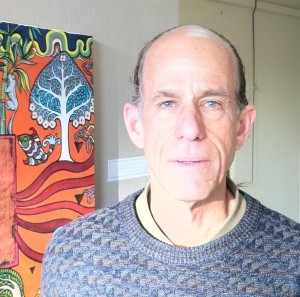
Brian McConnell
Brian McConnell
Abstract: Identified as a facet of psychosocial experience in something Ken Wilber has termed dissociation, this article looks at similarly related phenomenology as recounted by various others in apportioning its pathological effects across a broad swath of global consciousness. Advocating contemplative practice as a mode for translating theory to application, the article also shows how urban practitioners are initiating communities (CoP) to localize socioeconomic innovation.
Introduction
Calling for an adoption of contemplative practice, Ken Wilber explains in The Marriage of Sense and Soul (1998) that the “central problem” in the relationship between religion and science—”the major reason modern science rejected religion, and the major reason higher and interior modes were replaced by an exterior and monological monopoly”, followed science’s discovery “that mind and consciousness were anchored in the natural organism” (e.g. ‘the body‘)[emphasis added] (Wilber, Marriage 61). Additionally, but more specifically in respect to growth and the extraordinary process of differentiation and integration, Wilber has also noted “if something goes wrong with either of those strands of growth—differentiation or integration—the result is pathology.”
Consequently, “(i)f differentiation fails to occur, the result is fusion, fixation, and arrest”. By contrast though, “if differentiation begins but goes too far, the result is dissociation or fragmentation. Differentiation gets out of control, and the various subsystems cannot be easily integrated: they fly apart instead of fitting together. The parts don’t differentiate, they dissociate, and the result is fragmentation, repression, alienation” (Marriage 52-53). Also, but drawing from the work of Max Weber and Jürgen Habermas, Wilber subsequently asserts that likewise, ‘modernity‘ is chiefly defined by its “differentiation of the cultural value spheres” or the Big Three (see Fig. 1); “art, morals, and science; the Beautiful, the Good, and the True“; I (Upper-Left quadrant), WE (Lower-Left quadrant), and IT(S) (Right-hand quadrants) [emphasis added] (Marriage 74).
This means in effect that “the governing principles of the hundred or so democratic nations in today’s world are in fact the principles of modernity—that is, the values of the liberal Western Enlightenment“. Over time then, modernity’s democratic roots have germinated from the seeds of “equality, freedom, and justice; representational and deliberative democracy, the equality of all citizens before the law, regardless of race, sex, creed; political and civil rights (freedom of speech, religion, assembly, fair trial, etc.).” Furthermore, and because they’d “existed nowhere” on a large scale in “the premodern world“, he subsequently refers to these values and rights “as the dignity of modernity” (Marriage 44).
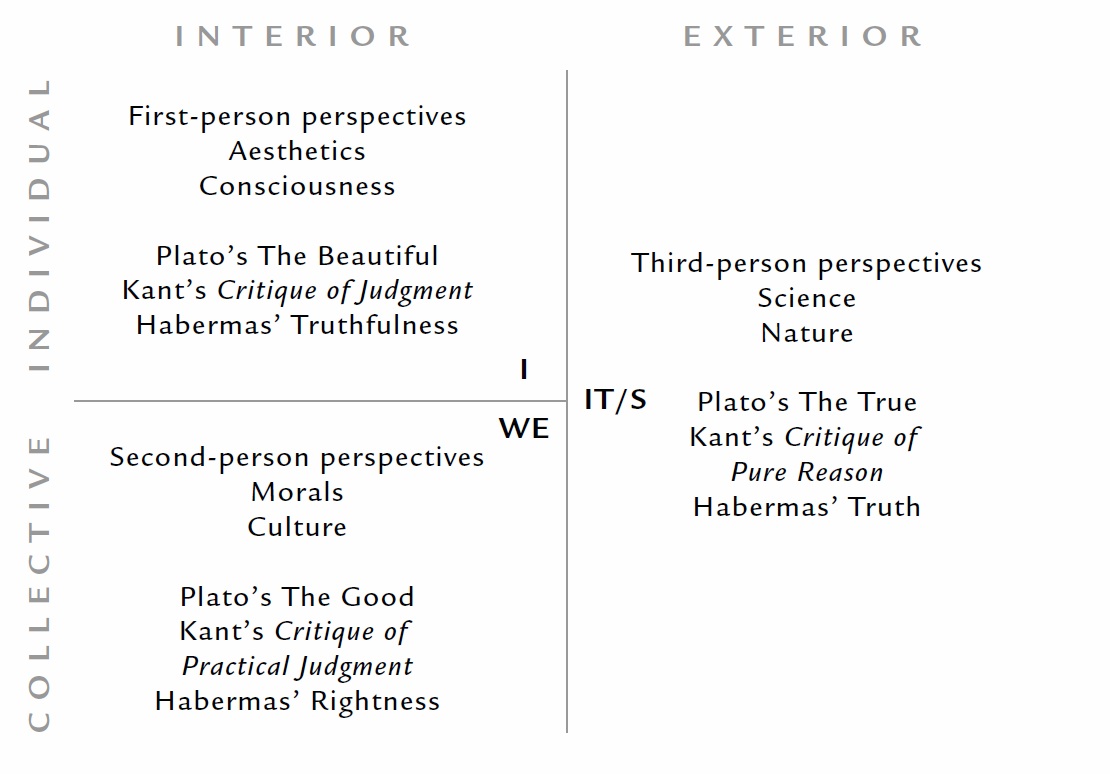
Figure 1. The Big Three (Esbjörn-Hargens 4)
Yet too, but where this modern differentiation is said to have begun “in earnest around the sixteenth and seventeenth centuries, by the end of the eighteenth and the beginning of the nineteenth” it “was already drifting into a painful and pathological dissociation” [emphasis added] (Marriage 55). Consequently, the Left-Hand or interior dimensions were ultimately “reduced to their Right-Hand or exterior correlates which utterly collapsed the Great Chain of Being, and with it, the core claims of the great wisdom traditions” [emphasis added] (Marriage 75-76). Or, to put it in other terms, “(d)ignity became disaster” [emphasis added] (Marriage 13).
Nevertheless however, and as Sean Esbjörn-Hargens notes in “An Overview of Integral Theory” in respect to this entire schema, no other “meta-framework” is “as inclusive and theoretically sound as integral theory, which is what has made it such a useful approach in so many contexts.” For these reasons, the AQAL model (see Fig. 2) effectively interrelates “the basic elements of reality” in such a way that “an integral approach” actually “allows for true, good, and beautiful solutions to the major problems we face as we travel into the 21st century” [emphasis added] (Esbjörn-Hargens 18).
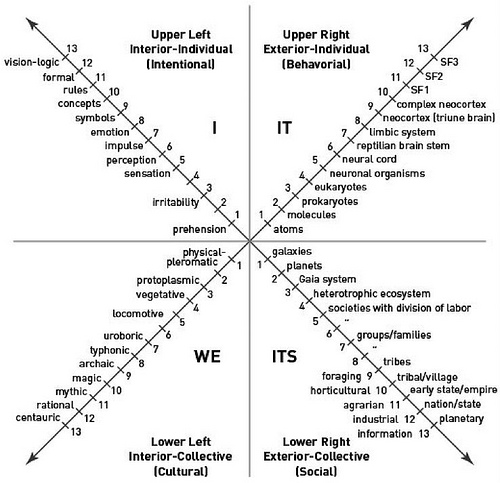
Figure 2. The Four Quadrants (Wilber, What is Integral 5)
Consequently too, and because the four quadrants are “co-nascent—literally “they are born together” and are mutually implicated in one another”; they “co-arise and tetra-mesh” with each other. As Hargens further explains, this is especially “useful because it honors the complexity of reality in a way that allows the practitioner to address problems in a more skillful and nuanced way” [emphasis added] (Esbjörn-Hargens 7).
Totalitarianism: a ‘Disaster of Postmodernity’
Disconcertingly though, and particularly over the last ten years, symptomatic proof of the pathology described above has become plainly evident in two respective and especially relevant socioeconomic dimensions; political philosophy and political economy. As a result, but over this same period, one of the most credible voices among many noting an onset of this malady has been that of Princeton University professor emeritus and political philosopher, Sheldon Wolin. As the author of Democracy Incorporated: Managed Democracy and the Specter of Inverted Totalitarianism, Wolin’s efforts have been at the forefront of others exploring similarly related themes, including Aaron Russo (America: Freedom to Fascism), Naomi Klein (The Shock Doctrine), and Naomi Wolf (The End of America: Letter of Warning to a Young Patriot) to name a few (Johnson).
As an otherwise aberrant or ‘pathological’ condition, Wikipedia contrasts classical totalitarianism to inverted totalitarianism by attesting that states dominate “economic actors” in the former while corporations exert control over government, “through political contributions and lobbying” for example, in the later (Inverted, Wikipedia). This article however, will suggest that the causal underpinnings of the totalitarianism depicted herein, especially as it pertains to subjective consciousness (e.g. the Left-Hand quadrants), extend well beyond those commonly proffered to this point (see: Fromm’s – Escape from Freedom). Consequently though, and where Adolph Hitler exerted economic direction and fascist control of Germany’s citizenry via National Socialism; globalized central banking (see: New world order) has in like manner, imposed its profit oriented, obligatory, debt-based will in a way that both necessitates and subsequently imposes, compulsory but non-sustainable, financial growth in mindless disregard for the planet’s overall (e.g. ecological, economic, or psychological) well-being¹.
Disturbingly though, while a politically entrenched neoclassical hegemony continues to muddy or otherwise stymie the entire ‘debt’ issue²; a troubling series of directly related geopolitical incidents has nonetheless unfolded over recent years. Beginning with anti-austerity protests in the aftermath of Ireland’s financial crisis, and continuing through a supplanting of Greece’s government with interim technocrats, to the US debt ceiling and sequestration fiasco, to a seizing of private, uninsured Cypriot deposits; all, reflect varied installments of a debacle involving widespread hardship and suffering amongst a global populace’s teeming throngs.
From any serious historical perspective the long term trends are ominous: there is now massive evidence that for decades Americans have been steadily becoming less equal, less free, and less the masters of their own fate. (Alperovitz 1)
In addition to growing social and economic pain, given the failing long-term trends related to equality, liberty and democratic capacity, it holds that we are beginning to enter a sustained period in which the classic elements of a legitimation crisis appear to be slowly coming to the fore. (Alperovitz 3)
Therefore, and particularly in respect to political science, Gar Alperovitz’s reference to a “legitimation crisis“ is telling [emphasis added] (Alperovitz 3). Likewise too, but from a slightly differing viewpoint, International Simultaneous Policy Organization (ISPO) founder and simultaneous policy initiator John Bunzl expresses similar alarm.
While the mechanics of free and fair elections may still exist, the quality of democracy has beendrastically hollowed out, reducing it to what I have elsewhere described as pseudo-democracy(Bunzl, 2001, pp. 30-36); a kind of electoral charade in which, in terms of macro-economic andenvironmental policy at least, it no longer matters much which party we vote for, or whether webother to vote at all. This is how destructive competition severely constrains governments and,by consequence, the ability of citizens to remedy the situation through conventional democraticprocesses. What all this amounts to is a “legitimation crisis”; a breakdown in the adequacy ofthe existing worldview and its governance systems to command allegiance (Habermas, 1973). (Bunzl 118)
From an Integral Perspective . . .
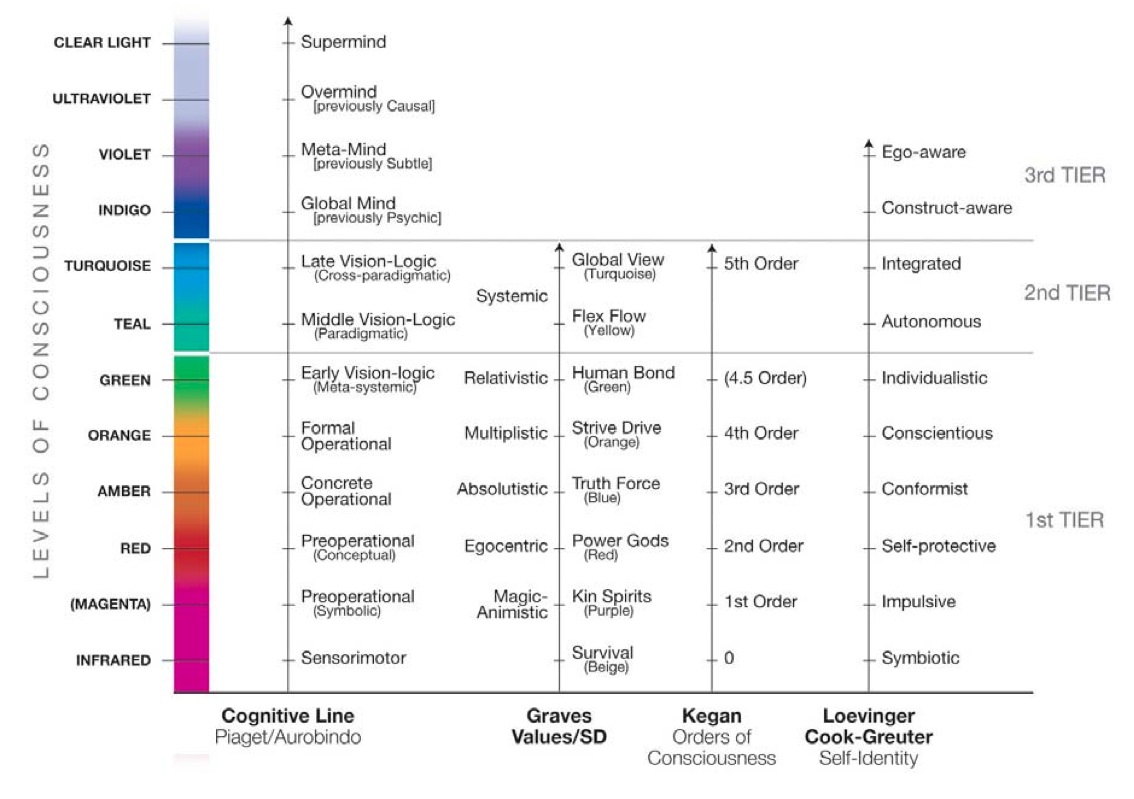
Figure 3. Some Major Developmental Lines (Wilber, What is Integral 32)
Yet, and as previously posed, although the Western Enlightenment afforded humanity a new set of rational beliefs and values effectively grounded in scientific reason, a locus for those mentalities has been associated by certain authors, with an Orange level of conscious development (see Fig. 3). Also from Bunzl’s perspective, and acknowledging that “with orange altitude rationality came a more encompassing worldview” which in turn, helped establish “the postconventional stages of “civil liberties” and “legal freedom””, he further clarifies why this developmental stage is considered so determinably nationcentric (see also Cook-Greuter).
Struggles for democracy and human rights, although released by rationality—a wave that was transnational in its potential and often in its articulation (e.g., Marx)—nevertheless remained essentially national struggles . . . For the vast majority of Western citizens in the modern era, then, the concept of the nation-state was internalized as the highest and most powerful expression of a common identity; the highest expression of We (Smith, 1993).
(Bunzl 107)
Bunzl further notes how “(t)his sense of in-group versus out-group was reflected in the competitive, colonial era whereby the rational worldview, being predominantly at orange altitude, saw its own nation before (or above) all others” [emphasis added] (Bunzl 107). As a result though, when viewed as a collective mind-set of significant proportions, the inherent limitations of orange consciousness (e.g. Late Industrial-LR/Nationcentric-LL) from Bunzl’s vantage point anyway, represents the constraining limits of development in what he’s identified as a “governance gap” in “the civic line of development” (see Fig. 4).
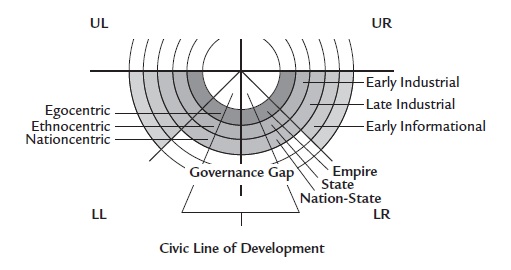
Figure 4. The Governance Gap (Bunzl 108)
Furthermore, and pointing to the practice of “destructive international competition” exemplified in race to the bottom policies as being a “central barrier” to more effective global regulation of social and environmental protection however (Bunzl 117), he also expresses reservations concerning impropriety on the part of even “conscious capitalists” prone “to gradually abandon or compromise their principles to ensure they stay competitive and survive” (Bunzl 115).
Belgium economist and scholar Christian Arnsperger describes a similar scenario, but one in which the full “degree of . . . failure” of the “old neoclassical approach” is only ascertained by adopting an Integral lens. Yet, and as he further explains, this particular subterfuge is “all the more baffling when one realizes to what extent these utterly non-integral paradigms that dominate the profession (of economics) have effects and implications on the everyday lives of citizens all over the planet” (Arnsperger, Spelling Out 2)
Thus, Arnsperger intuits an actuality where post-neoclassical agents, though possessing both subjective Upper-Left (UL) and intersubjective Lower-Left (LL) conscious awareness are regarded as being “unable to ask themselves about the meaning of their lives” or much less, “criticize the functioning of the economic system”. As a result, and because today’s “economist-engineers want to know how to generate material wealth, how to distribute the wealth, and how to make all individual agents fit into the overall systemic mechanisms needed to stimulate wealth generation”, “the only ones who would be able—and allowed—to reflect on whether life has meaning and whether the economic system is the right one would be the economists themselves”. Furthermore, but operating under this state of affairs, “the other agents would be and forever remain—as they are indeed now characterized by post-neoclassical economics—unreflective, blind, adaptive automata” [emphasis added] (Spelling Out 4).
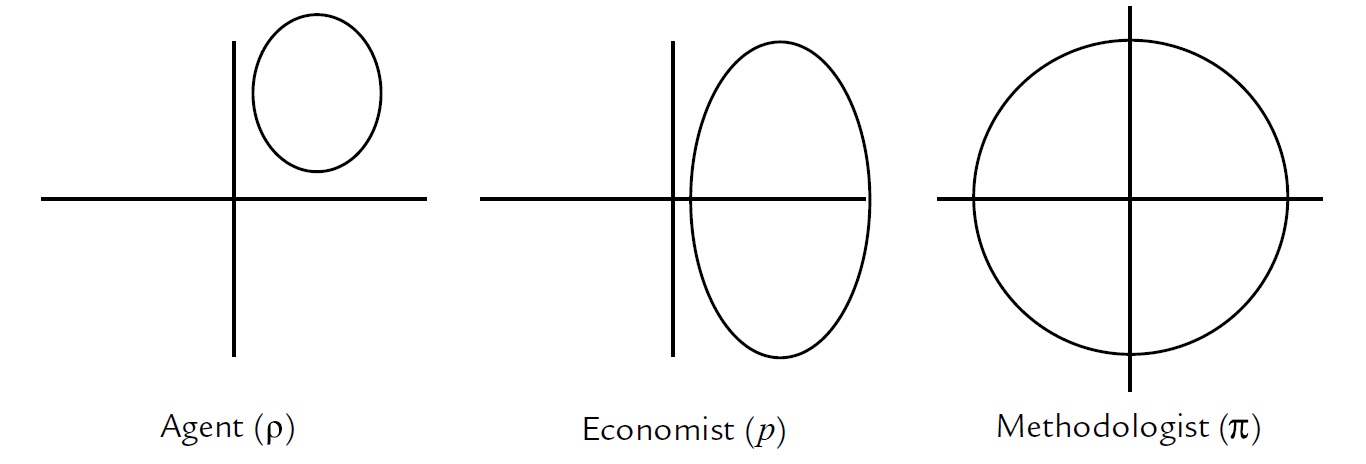
Figure 5. The Three Level Structure of Paradigms – First Version (Spelling Out 5)
This means also, “that (these) agents have only a very crude, “spontaneous” paradigm—let’s call it paradigm p—which they use to busily adapt to the constant changes in their emerging local environments” [emphasis in original] (see Fig. 5). By way of contrast though, economists “would have a set of knowledge tools—let’s call it paradigm p—that allow them to apprehend the “bigger picture” in a way that is denied to non-economists”. Consequently then, the reader may wonder, “what distinguishes the post-neoclassical economist from the economic methodologist studying the post-neoclassical economist? Mainly the fact that the methodologist has a set of “knowledge tools“—let’s call it paradigm π—which allow him or her to apprehend the “big picture” in an even broader way than the economist, because the methodologist can tell which parts of reality the economist intentionally leaves out or reduces to other parts” [emphasis added] (Spelling Out 4).
Consequently then, the methodologist can see “where the Upper-Left (UL) and Lower-Left (LL) quadrants have been eliminated” at the behest of “science”, and that “the economist” essentially by caveat, “denies any place in his work to his own subjectivity (denial of the UL dimension of his awareness) and to his own moral and cultural values, which flow from the time and place in which he is doing that work (denial of the LL dimension of his awareness)” [emphasis added] (Spelling Out 5). Thus, for Arnsperger, an “economic realty” where, despite Wilber’s entreaty that “the AQAL structure is immanent to anybody’s ongoing awareness”; “functions in such a way that 99% of its members do not fully activate more than half” of that same structure (Spelling Out 7), is in effect a “spiritually alienated economy”. That is, put in other words, an economy “of mostly unaware, unrealized humans who have no idea how much of their internal capacities for knowledge they are leaving unutilized—it is an economy made up of un-free individuals: economists who believe their mission in life is to do narrow, positivistic, Right-Hand “science,” and economic agents who function as unreflective automata” [emphasis added] (Spelling Out 8).
A New Story . . . from a Methodologist’s Perspective
“Is it possible that the human future depends upon a new sacred story—a story that gives us a reason to care? Could it be a story already embraced by a majority, although it has neither institutional support nor a place in the public conversation?” (Korten)
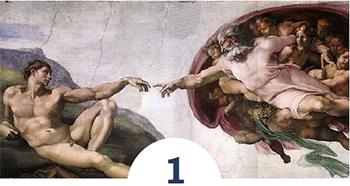 In a recently published article by David Korten, the economist and former Harvard professor poses “(t)hree distinct cosmologies“, each it’s said, having “their (respective) influence in shaping the Western worldview.” The first is that of the “Distant Patriarch”, a “cosmology most commonly associated with the institutions of Judaism, Christianity, and Islam.” By virtue of the fact that it “focuses attention on our individual relationship with a personal but distant God” however, it subsequently means “our human relationships with one another and with nature” is “secondary to this primary relationship” (Korten 2). Consequently though, and because this worldview “reduces the purpose of life in the present to a fear-based quest to earn credits toward a divine judgment that will determine whether our fate after death will be to join the saved or the damned”, it “is a perfect setup for the manipulation and exploitation of believers by demagogues” (Korten 3). Translated through an integral lens, this ‘story’ could be said to reflect many of the limits of contemporary religion evidenced in the Left-Hand quadrants of Wilber’s AQAL model or the realm of religious experience (e.g. ‘Religion’) as depicted in The Marriage of Sense and Soul.
In a recently published article by David Korten, the economist and former Harvard professor poses “(t)hree distinct cosmologies“, each it’s said, having “their (respective) influence in shaping the Western worldview.” The first is that of the “Distant Patriarch”, a “cosmology most commonly associated with the institutions of Judaism, Christianity, and Islam.” By virtue of the fact that it “focuses attention on our individual relationship with a personal but distant God” however, it subsequently means “our human relationships with one another and with nature” is “secondary to this primary relationship” (Korten 2). Consequently though, and because this worldview “reduces the purpose of life in the present to a fear-based quest to earn credits toward a divine judgment that will determine whether our fate after death will be to join the saved or the damned”, it “is a perfect setup for the manipulation and exploitation of believers by demagogues” (Korten 3). Translated through an integral lens, this ‘story’ could be said to reflect many of the limits of contemporary religion evidenced in the Left-Hand quadrants of Wilber’s AQAL model or the realm of religious experience (e.g. ‘Religion’) as depicted in The Marriage of Sense and Soul.
Korten’s second story is that of the “Grand Machine”. This particular paradigm is “commonly 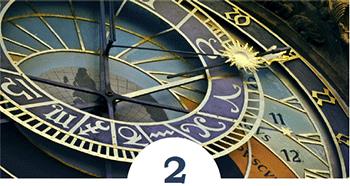 associated with science” whose parts typically include “Newtonian physics, evolutionary biology, and the institutions of secular academia. In this cosmology” however, “only the material is real. The formation and function of the cosmos and the evolution of life are consequences of a combination of physical mechanism and random chance.” Consequently then, and “as economists of a social Darwinist perspective assure us, our competitive instinct is the primary and essential driver of human prosperity and progress.” As a result too, “(t)he defining debate turns on the question of whether this instinct best serves society when free from government interference or when guided by public regulation and incentives” (Korten 2). Again, but translated in respect to AQAL, this particular story could be viewed as reflecting the Right-Hand quadrants of ‘hard’ Science (e.g. narrow science) in The Marriage of Sense and Soul.
associated with science” whose parts typically include “Newtonian physics, evolutionary biology, and the institutions of secular academia. In this cosmology” however, “only the material is real. The formation and function of the cosmos and the evolution of life are consequences of a combination of physical mechanism and random chance.” Consequently then, and “as economists of a social Darwinist perspective assure us, our competitive instinct is the primary and essential driver of human prosperity and progress.” As a result too, “(t)he defining debate turns on the question of whether this instinct best serves society when free from government interference or when guided by public regulation and incentives” (Korten 2). Again, but translated in respect to AQAL, this particular story could be viewed as reflecting the Right-Hand quadrants of ‘hard’ Science (e.g. narrow science) in The Marriage of Sense and Soul.
 Korten describes the third cosmology as having “ancient roots and a significant modern following”, but lacking “institutional support and public visibility.” In contrast to the “prevailing theories of social Darwinism” though, this story (the “Integral Spirit cosmology“) “recognizes that life is a fundamentally cooperative enterprise.” Within this context then, “(e)xtreme individualism, greed, and violence are” understood to be “pathological“and as such, reflect “signs of physical, developmental, cultural, and/or institutional system failure” [emphasis added] (Korten 3).
Korten describes the third cosmology as having “ancient roots and a significant modern following”, but lacking “institutional support and public visibility.” In contrast to the “prevailing theories of social Darwinism” though, this story (the “Integral Spirit cosmology“) “recognizes that life is a fundamentally cooperative enterprise.” Within this context then, “(e)xtreme individualism, greed, and violence are” understood to be “pathological“and as such, reflect “signs of physical, developmental, cultural, and/or institutional system failure” [emphasis added] (Korten 3).
The Integral Spirit cosmology postulates that we humans participate in and contribute to the divine journey. We can apply our distinctive capacities for reflective consciousness and choice either to advance creation’s evolutionary thrust toward ever more creative possibility, or to disrupt it. Together, our individual choices determine our collective fate and share the course of the journey far beyond our time. (Korten 3)
Furthermore, and in this way, “(t)he Integral Spirit cosmology is consistent with the findings of quantum physics, which reveal that the apparent solidity of matter is an illusion and at the deepest level of understanding only relationships are real” [emphasis added] (Korten 3). Yet, the question remains: “Is it possible that the human future depends upon a new sacred story” (Korten)?—there’s adequate reason to answer in the affirmative.
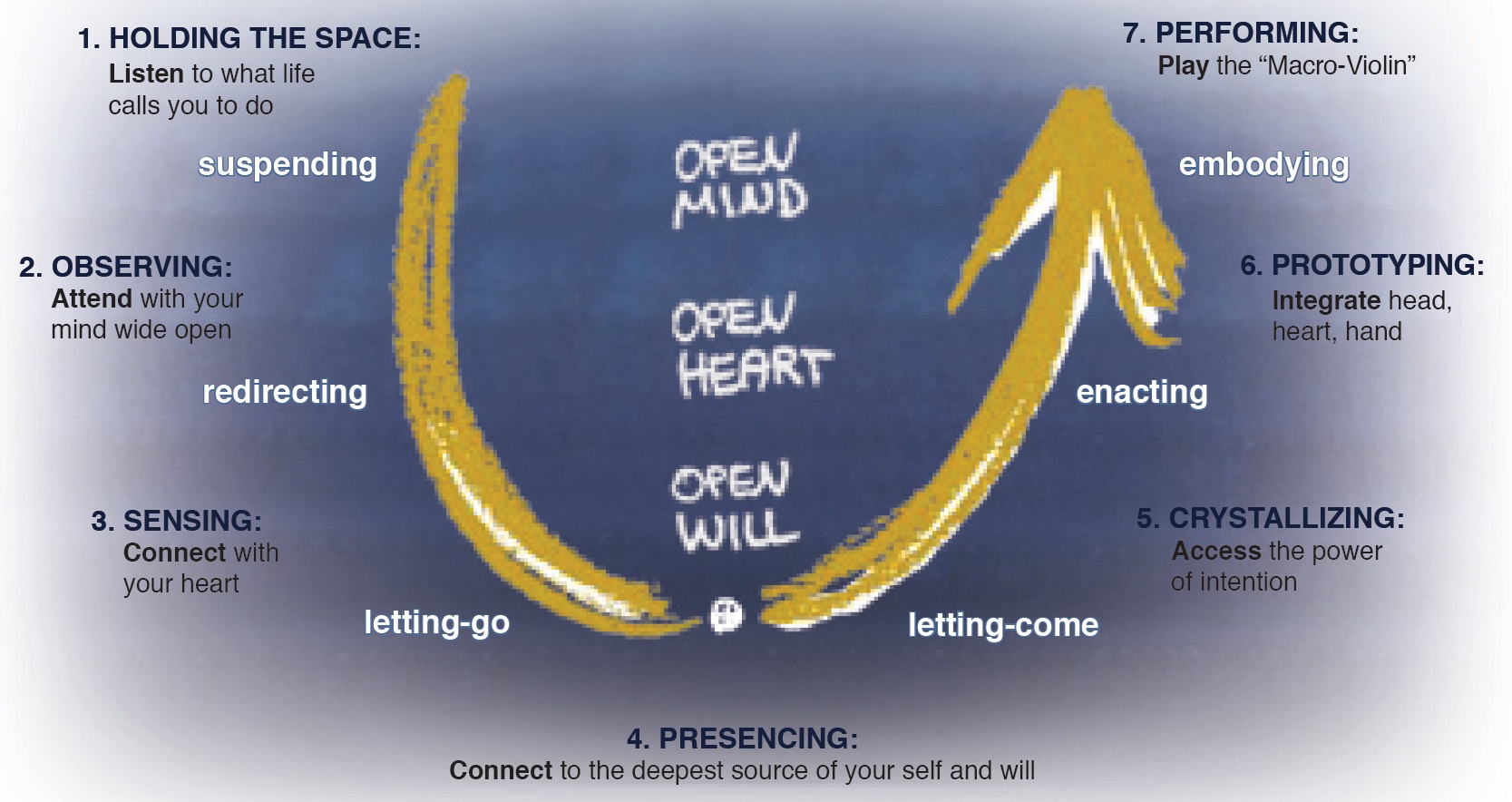
Figure 6. – “A New Social Technology with Seven Leadership Capacities” (Scharmer 12)
In July of 2011, the United Nations General Assembly issued a resolution entitled, “Happiness: towards a holistic approach to development“. The declaration firmly avowed “that the gross domestic product indicator by nature was not designed to and does not adequately reflect the happiness and well-being of people in a country” [emphasis added] (United Nations)³. This action was followed by publication of the World Happiness Report which subsequently pointed to a revived interest in “the measurement of subjective well-being” [emphasis added] (Helliwell, Layard, & Sachs, 2012). Along these same lines too, Jeffrey Sachs has done much to champion a greater appreciation for the role of qualitative, subjective experience (Left-Hand quadrants) in effecting “freedom from suffering”; noting that “(t)raditional measures of economic performance—namely, gross domestic product and household income—capture only a small part of what determines human wellbeing” [emphasis added] (Sachs 2209).
Why do our attempts to deal with the challenges of our time so often fail? Why are we stuck in so many quagmires today? The cause of our collective failure is that we are blind to the deeper dimension of leadership and transformational change. This “blind spot” exists not only in our collective leadership but also in our everyday social interactions. (Scharmer 1)
In much this same way, but in respect to leadership, Gross National Happiness (GNH) Lab co-founder Otto Scharmer’s work with Theory U has served to introduce many to a form of practice which “allows individuals and groups to shift the inner place from which they function.” Moreover, and “(w)hen that shift happens, people (can) begin to operate from a future space of possibility that they feel wants to emerge” [emphasis added] (Scharmer 1). By way of illustration then (see Fig. 6), and in better understanding the means by which leadership is actually embodied, Scharmer details Prototyping as the sixth capacity of leadership within “a new social technology” (Scharmer 9).
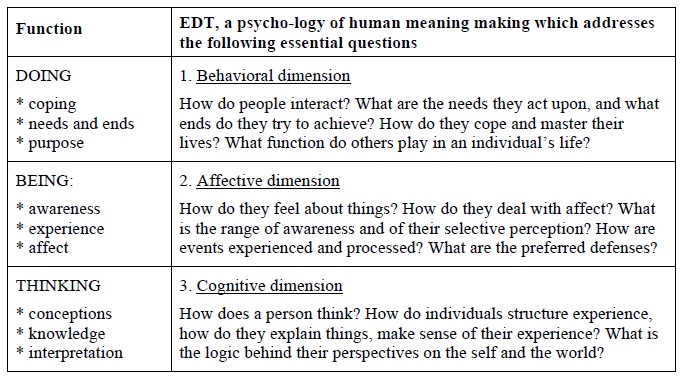
Table 1. Three Main Dimensions of Each Stage (Cook-Greuter 3)
Because this particular step entails “intentionally reintegrating the intelligence of the head, the heart, and the hand in the context of practical applications” (Scharmer 12) however, the integral practitioner may already have some familiarity with the underlying notion from Susanne Cook-Greuter’s presentation of “Ego Development Theory (EDT)” (Cook-Greuter 3).
Subsequently then, and using this vantage point (see Table 1), Scharmer’s head readily transposes as Cook-Greuter’s Thinking, the heart to Being, and his hand as Doing. Likewise, but in moving back up the ‘U’, Scharmer issues a warning that “the enemies” most likely to be encountered “are the three old methods of operating: executing without improvisation and mindfulness (reactive action): endless reflection without a will to act (analysis paralysis): and talking without a connection to source and action (blah-blah-blah)” [emphasis added] (Scharmer 11).
More directly related to context of integral leadership though, and subsequently involving the meso level of experience, Integral City founder Marilyn Hamilton makes an especially astute observation related to scale. In reference to Abrams and Primack, she recounts her interpretation of their work as implying “that in all the manifest universe, the human was at the mid-size of all things – what they called the “Midgard”” and that “human systems, being in that size zone had a peculiar opportunity to adapt its functions as “intelligent stardust”” (Hamilton Meshworking 6). She goes on to say, “(i)n an instant of intuitive recognition, I started to consider the human hive as being at the mid-size of human systems (between the individual and the nation) and wondered what critical role cities have to play in humans becoming Gaia’s organ of reflection?” [emphasis added] (Meshworking 7).
Meshworks appear to be an evolutionary strategy, that has been in play since the Big Bang, where the Universe vacillates between self-organizing exploration and progressively more complex order (Abram & Primack, 2006; Bloom, 2000, 2010). Order emerges out of a self-organizing system when sufficient connections within that system have been made to produce new properties in the system. (Meshworking 9)
Hamilton has in turn, come to ascribe “enormous value” to what she terms “meshworking“. The subsequent importance of meshworking “is that it embraces both the realms of the objective and interobjective space of physical people and built structure, and calls for the capacities that lie in the subjective and intersubjective zones of the City. These are the inner domains of intention, purpose and culture.” Consequently, and for this reason, “meshworking intelligences” have much to contribute towards “research, planning and management in the city” [emphasis added] (Meshworking 8). Furthermore, “(t)he process of meshworking (applying meshworking intelligences) applies meshworking principles as a design strategy that capitalizes on the ordering aspect of a meshwork to produce a desired end.” That is, “(m)eshwork designs create conditions, practices and processes that move a heap of disconnected individuals into a network, then a community of practice, then spheres of influence” [emphasis added] (Meshworking 9).
State of the World’s Cities 2012/2013
A fresh future is taking shape, with urban areas around the world becoming not just the dominant form of habitat for humankind, but also the engine-rooms of human development as a whole.
Amidst multiple challenges facing cities today, a focus on poverty reduction and/or responses to the economic crisis is gradually shifting to a broader and more general understanding of the need to harness the transformative dynamics and potentials which, to varying degrees, characterize any city anywhere in the world. (UN-Habitat v)
On one hand, while cities have served a “time-honoured role” as “centres of prosperity”, a place where people have perennially congregated “to realize aspirations and dreams, fulfil needs and turn ideas into realities”, a recent report nevertheless advocates “the need for transformative change towards people-centred, sustainable urban development” as a means of effectuating “what a revised notion of prosperity can provide” [emphasis added]. “More specifically”, the study urges “a shift in attention around the world in favour of a more robust notion of development – one that looks beyond the narrow domain of economic growth that has dominated ill-balanced policy agendas over the last decades” (UN-Habitat v) and instead, sees cities as providing “ready, flexible and creative platforms that can mitigate the effects of regional and global crises in a pragmatic, balanced and efficient way” [emphasis added] (UN-Habitat 11).
As the privileged locus of prosperity, the city remains best placed to deal pragmatically with some of the new, post-crisis challenges. With adequate backing from higher tiers of government, the city appears as a flexible, operational , creative platform for the development of collaborative agendas and strategies for local responses to the global crisis.” (UN-Habitat v)
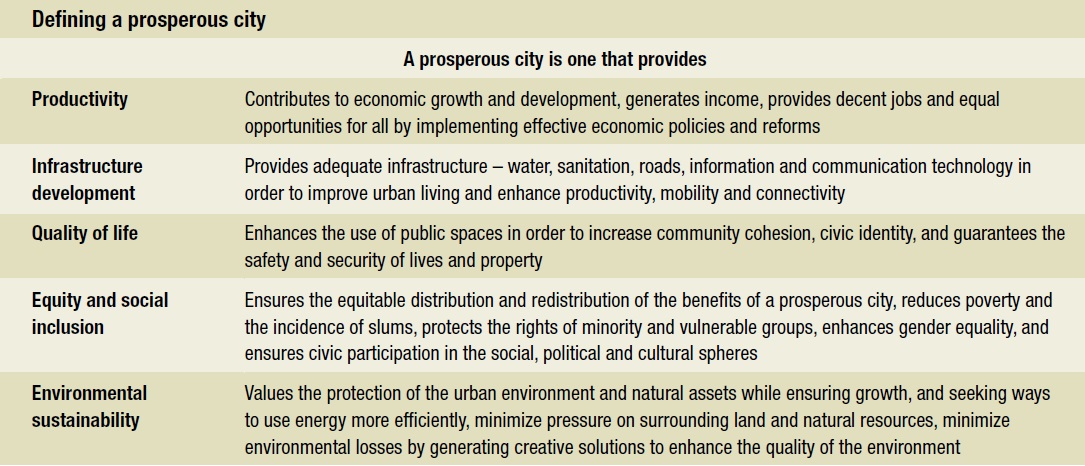
Table 2. Defining a Prosperous City (UN-Habitat 14)
Along these same lines then, but recognizing that “the prevailing view continues to confine prosperity to the realm of economics; a limiting view that shuts out other dimensions that are integral to human well-being and necessary for individual and collective fulfilment”, the report “introduces a new gauge” combining “the five dimensions of prosperity” reflected in Table 2 (above) into “the City Prosperity Index” which subsequently pinpoints “strengths and weaknesses” in a way that “policy action can address imbalances” [emphasis added] (UN-Habitat 13).
It takes leadership to change the prevailing urban paradigm and develop the transformative vision that will not just boost productivity of a city, or region, or even country, but also broadly distribute the associated benefits for the sake of shared prosperity. (UN-Habitat 47)
Likewise though, and while “(p)rosperity remains one of humankind’s most enduring pursuits . . . it is only in the past few decades that decision-makers, academics, practitioners and populations have started to measure this important dimension of human development” (see Fig. 7). Thus, the report subsequently acknowledges that “(a) ‘prosperous’ life includes other non-material, non-tangible dimensions, like having a voice in shaping the future of one’s city, having meaningful relationships, belonging to supportive communities, and having the resources and capabilities to transform your dreams into concrete realities” [emphasis added] (UN-Habitat 16).
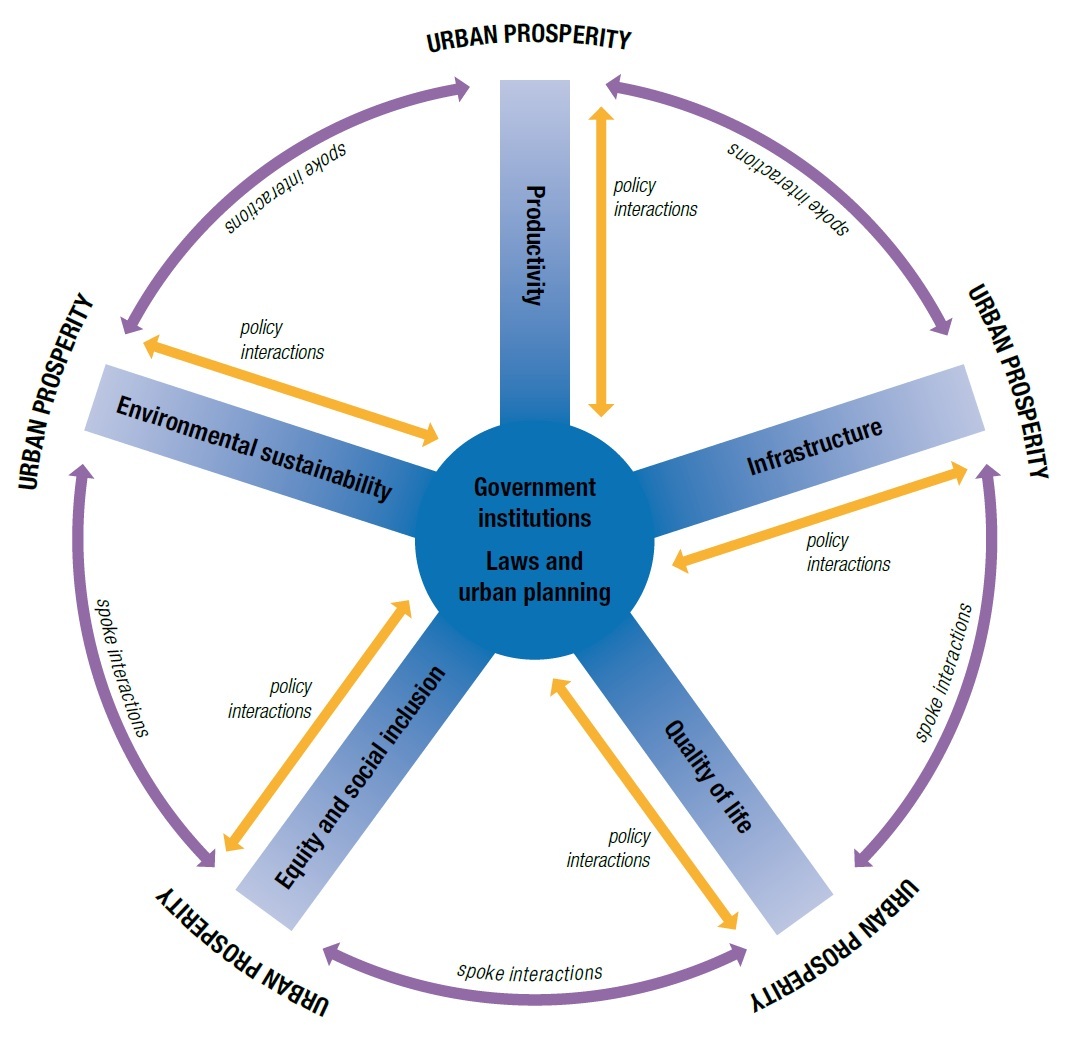
Figure 7. – The Wheel of Urban Prosperity (UN-Habitat 15)
Along these same lines, and though “no one disputes that quality of life is essential for a city to prosper”, there’s also a broad consensus the concept implies “different meanings and facets.” As a result, and though “(m)any efforts have been made to develop a policy-oriented definition, yet the essence of quality of life remains vague when applied to urban areas.” Consequently though, these same “efforts have turned from definition to scientific measurement of quality of life.” Thus, for “Nobel laureate Amartya Sen, quality of life is determined by the various opportunities open to individuals, and their freedom to choose from these many opportunities” [emphasis added] (UN-Habitat 59).
Policy: When a city focuses solely on economic prosperity, it is very likely that the benefits and improvements in terms of quality of life may not be geared to the urban poor, particularly in those cities where corruption and poor governance are endemic. (UN-Habitat 59)
Unfortunately however, and beginning in the “1970s, widening income gaps began an unhealthy co-existence with economic growth, with reduced incomes for households in the middle and lower classes and steady increases for the well-off.” This economic inequality in effect, proved “seriously detrimental to the equitable distribution among individuals of opportunities to pursue a life of their choosing and be spared from extreme deprivation in outcomes” (UN-Habitat 68).
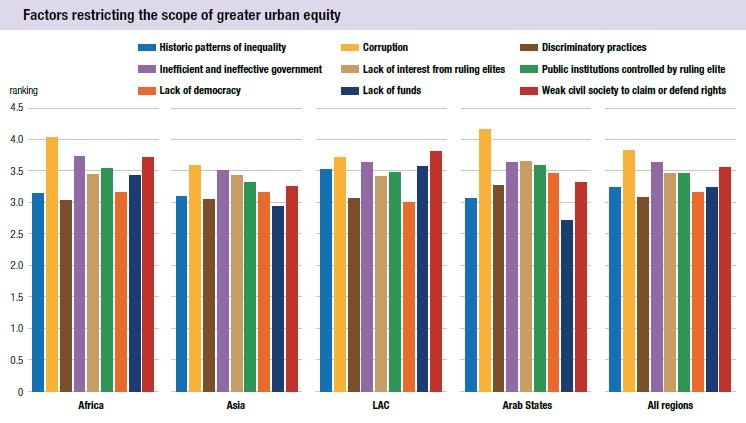
Figure 8. Factors Restricting Scope of Urban Equity (UN-Habitat 73)
Therefore, and in this same regard, equity is said to “involve systemic (re)distribution of the economic benefits of growth or development, with legal frameworks ensuring a ‘level playing field’ and institutions protecting the rights of the poor, minorities and vulnerable groups” [emphasis added] (UN-Habitat 68). As a result then, equity or the “lack thereof”, “work in exactly opposite ways. When actively pursued, equity can act as a powerful catalyst for prosperity, exerting multiplier effects on other prosperity factors, optimizing their respective performances and creating linkages among them” [emphasis added] (UN-Habitat 69).
As a result, “(e)quity is not simply a normative concern, related to issues of fairness and justice, important as these may be.” Instead, “(i)t is a material factor which directly impinges on the process of social and material sustenance. In fact, through removal of ‘unfreedoms’, and with the attendant broadening of choices and opportunities, equity enhances the city’s transformative capacity while also promoting identity and agency among the population” [emphasis added] (UN-Habitat 69). Consequently, and quoting the conclusion of OECD experts from 2006, the report indicates “researchers are increasingly finding that regions marked by higher levels of inequality, in fact, find their economic performance damaged.” Thus, the study infers, “(t)he statement that ‘more equal cities are more prosperous cities’ is increasingly supported by evidence, and has become a development proposition” (UN-Habitat 71).
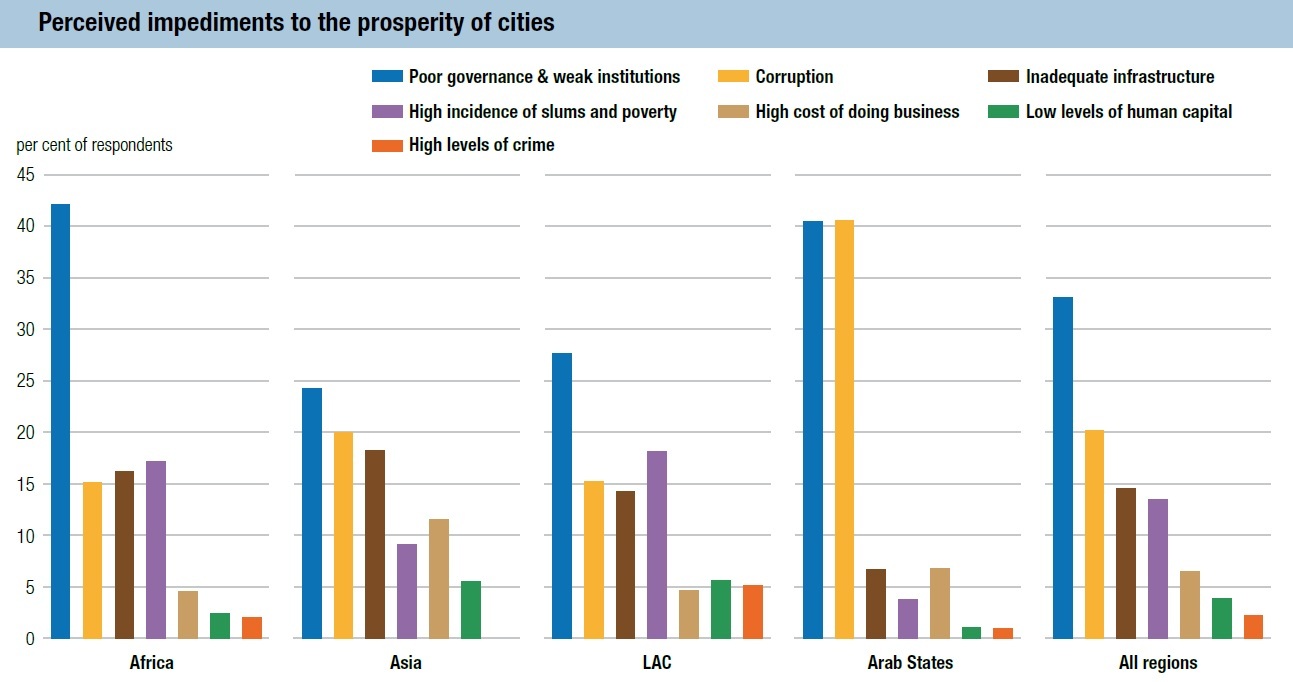
Figure 9. Perceived Impediments to City Prosperity (UN-Habitat 99)
Therefore, but “(w)ithout elaborating on the moral principle that inequality is inherently unacceptable”, the report nevertheless notes that the “recent society-wide upheavals in Tunisia, Libya and Egypt did not occur against a background of extreme poverty or deprivation” (UN-Habitat 71). In fact, and in all three cases, “national poverty reduction programmes had gained considerable traction” through gains in “(s)lum improvement or eradication”, the deployment of “(l)arge infrastructure projects with adequate transport networks” and “education and health” achievements “approaching or surpassing national Millennium Development Goals” (UN-Habitat 72). The report thus subsequently concludes, “(t)he sobering message from the Arab Spring, though still in a state of flux, is that leaders and societies ignore inequality at their own peril” (see ‘Arab States‘ in Fig. 8) (UN-Habitat 72).
Local experts surveyed by UN-Habitat unanimously concur that corruption is a major threat to the prosperity of cities. This is in line with the view that corruption is the single largest obstacle to development. Corruption can be found operating on a grand scale, often penetrating the highest policy-making organs of government, including urban authorities, or take a petty sort of nature, involving everyday public and social interactions. (UN-Habitat 98)
As reflected in Figure 8 then, where “corruption” and “inefficient and ineffective government” are perceived in the UN-Habitat survey as the two greatest barriers to equity (UN-Habitat 73), local experts similarly identified “poor governance and weak institutions” and “corruption” as the two primary impediments to urban prosperity (see Fig. 9) overall [emphasis added] (UN-Habitat 98).
As alluded to previously however, cities have nevertheless “played a major role in creativity and innovation throughout history. Creative people and systems, innovative milieus, knowledge creation mechanisms, and new technological developments have all primarily happened in cities and all contributed to societal development and prosperity.” In this respect then, “(i)nnovation is a creative capital that is brought to bear on various dimensions of development and prosperity (see Bettencourt et al.), in the process unleashing undeveloped potential and making fuller use of local resources and assets.” For these reasons also, the report subsequently implies a “culture of creativity must be embedded in the way cities operate” [emphasis added] (UN-Habitat 103).
Fact: Innovation, as defined in this Report, is a broader notion that has to do with creative approaches to planning, economy, social inclusion, environment, culture and local identity. (UN-Habitat 103)
In so doing, the purpose of founding such a culture “is not just for government or business, but also for communities and the public at large to contribute their own powers of imagination. And this has to be not just encouraged but legitimised as well, in a bid to broaden the range of solutions to urban issues.” At the same time however, “‘(i)nnovation‘ as glorified in association with ‘creative cities‘, the ‘creative class‘ and ‘city competition‘ (see Kotkin, and Hamilton Regenerativity), more often than not”, has proven to work to “the sole benefit of business and economic elites” and thus failed “to integrate the various dimensions of prosperity, particularly equitable development and environmental sustainability” [emphasis added] (UN-Habitat 103).
Embodying Integral Practice in the City 2.0
For too long the debilitating effects of material poverty have been divorced from the
spiritual causes of poverty that begin with what we value, with the way we think, and
with the resulting economic systems and practices. In this book, we have revealed that
the greatest poverty is that of our economic thought, encapsulated today in ‘Western’
neo-liberal economics. (Lessem & Schieffer, Chapter 22 356)
In concurrence with the above quote from Lessem and Schieffer’s, Integral Economics: Releasing the Economic Genius of Your Society (see Arnsperger, Book Review), this article has aspired to show how “the debilitating effects of material poverty” have in fact been “divorced from” their “spiritual causes” and subsequently, why the “systems” and “practices” of “neo-liberal economics” has proven inadequate for bringing about the more equalitarian prosperity discussed herein (Lessem & Schieffer, Chapter 22 356). The article has further sought to reveal why these “spiritual causes” also, seem to stem from a pathological dissociation or—separation, as Charles Eisenstein terms it in his, The Ascent of Humanity (Eisenstein, The Ascent).
It is “separation” then, in the form of technology and culture, that defines us as human; as well, it is “separation” that has generated the converging crises of today’s world. People of a religious persuasion might attribute the fundamental crisis to a “separation” from God; people of an ecological persuasion, to a “separation” from nature; people engaged in social activism might focus on the dissolution of community (which is a “separation” from each other); we might also investigate the psychological dimension, of “separation” from lost parts of ourselves. For good or ill, it is “separation” that has made us what we are. (quotation marks added) (Eisenstein, The Ascent 4)
Consequently, but in respect to consciousness, this pathological dissociation or ‘illusion of separation’ lies at the very root of almost boundless suffering. Yet, if this disunion is ever to be integrated; as Ken Wilber so astutely contends, it “can never be achieved by Nature alone, or by Mind alone, or by any combination of the two. Only Spirit itself, which is beyond any feelings of Nature and beyond any thoughts of Mind, can effect this radical unity. Spirit alone transcends and includes Mind and Nature” (emphasis added) (Wilber, Marriage 108). Thus, in reference to St. Bonaventure’s (1257) three eyes as depicted in Breviloquium (Marriage, Wikipedia), Wilber says:
And where the moons of Jupiter can be disclosed by the eye of flesh or its extensions (sensory data), and the Pythagorean theorem can be disclosed by the eye of mind and inward apprehensions (mental data), the nature of Spirit can be disclosed only by the “eye of contemplation” and its directly disclosed referents: the direct experiences, apprehensions, and data of the spiritual domain. (quotation marks substituted for italics) (Wilber, Marriage 170)
As a result, “(a)nd where the exemplar in the physical sciences might be a telescope, and in the mental sciences might be linguistic interpretation, in the spiritual sciences the exemplar, the injunction, the practice is: meditation or contemplation” (emphasis added) (Wilber, Marriage 170).
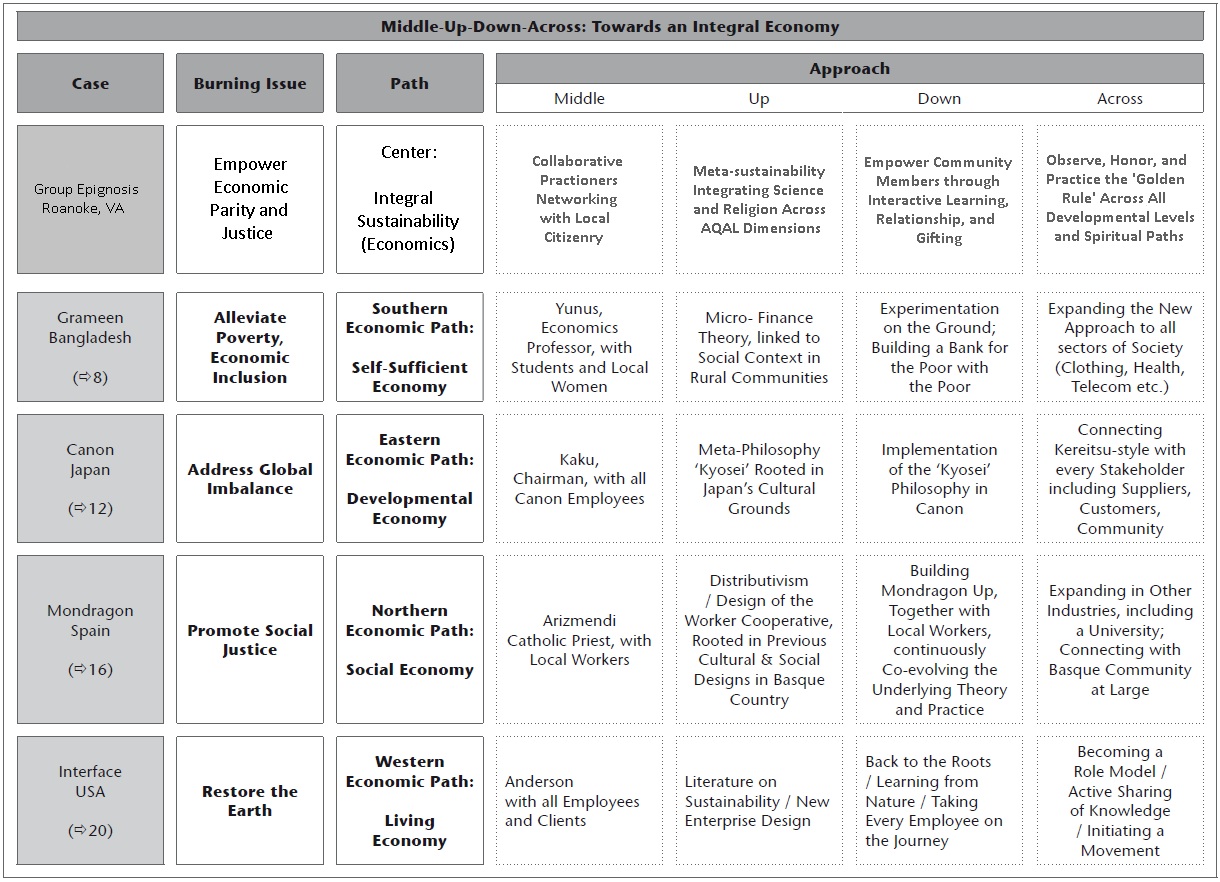
Table 3. Integral Economic Ecosystems – adapted from (Lessem & Schieffer, Chapter 22 352)
For these reasons however, and all this being said, the prospect of actually adopting integral methodology in today’s urban settings may otherwise present itself as a bit overwhelming. Nevertheless, but in posing ‘an idea worth spreading‘ in response to a challenge by the 2012 TED Prize winner—The City 2.0 (see “Transforming the City 2.0“); this practitioner drafted a white paper entitled, “Project Epignosis – Transforming the City 2.0” (McConnell, Project). Consequently, and drawing from an assimilated body of work by Ronnie Lessem and Alexander Schieffer (see Lessem and Schieffer) beginning with their,”The Practice of Transformation” (Lessem & Schieffer, The Practice) Roanoke’s Group Epignosis adopted the authors’ Four-World (GENE) Approach (Lessem & Schieffer, Chapter 2 26) as a template in initiating an integral economic laboratory of its own (see Table 3 – Appendix 1).
Thus, and from Lessem and Schieffer’s perspective, local laboratories like IUC – Roanoke (for instance) are envisioned to “function as community hubs for local economic transformation agents.” Consequently, and from this pool or network of (local) others, or in our case, urban enthusiasts, practitioners, knowledge workers, and technicians; communities of practice (CoP) are forged, which in turn “become catalysts for innovation in relation to economic thought and practice on a local basis” (emphasis added) (Chapter 22 347)
Thus, Lessem and Schieffer’s mention of Étienne Wenger in respect to his work with communities of practice, is especially noteworthy (Chapter 22 347). Also, and because of his and Jean Lave’s role in posing situated learning “as a model of learning in a community of practice” (emphasis added) (Situated, Wikipedia), their efforts hold significance for actualizing emergence in the form of social innovation.
The focus on the social aspect of learning is not a displacement of the person. On the contrary, it is an emphasis on the person as a “social participant”, as a “meaning-making entity” for whom the social world is a resource for constituting an identity. This “meaning-making person” is not just a cognitive entity. It is a whole person, with a body, a heart, a brain, relationships, aspirations, all the aspects of human experience, all involved in the negotiation of meaning. The experience of the person in all these aspects is actively constituted, shaped, and interpreted through learning. (quotation marks added for emphasis) (Wenger 2).
Much along these same lines, Margaret Wheatley and Deborah Frieze have co-authored a paper entitled, “Using Emergence to Take Social Innovation to Scale” (Wheatley & Frieze).
When local efforts connect with each other as “networks”, then strengthen as “communities of practice”, suddenly and surprisingly a new system emerges at a greater level of scale. This “system of influence” possesses qualities and capacities that were unknown in the individuals. It isn’t that they were hidden; they simply don’t exist until the system emerges. (quotation marks added for emphasis) (Wheatley & Frieze 1)
Emergence then, at least as principles of The Berkana Institute understand it, entails an evolutionary process involving the shift from a living systems network to intentional communities of practice, to “powerful systems capable of global influence”. From this vantage point, they similarly recognize this same course as “demonstrating how local social innovation can be taken to scale and provide solutions to many of the world’s most intractable issues—such as community health, ecological sustainability and economic self-reliance” (Wheatley & Frieze 2).
Within this same context involving both emergence and the relationship between religion and science however; and because Wilber has suggested that “(t)here is arguably no more important and pressing topic than the relation of science and religion in the modern world” (emphasis added) (Wilber, Marriage 3), I’d be remiss if I didn’t mention the ongoing and respective work of at least two additional figures. Therefore, and as the most central in proximity to the efforts of others, the Dean of Faculty at Claremont School of Theology, Philip Clayton (Oxford Handbook, Clayton) was editor for Sean Hargens’ and Ken Wilber’s, “Toward a Comprehensive Integration of Science and Religion: A Post-Metaphysical Approach” (Esbjörn-Hargens & Wilber) as well as Terrence Deacon’s, “The Sacred Emergence of Nature” (Goodenough & Deacon).
Along these same lines, it’s this author’s hope that this article’s readers, and especially members of the integral community, might reflect on its contents as a personal challenge to their contribution of thought, practice, and leadership to the emerging story involving the Great Transition.
Much freedom is gained when people realize the essential inter-connectedness of all phenomena and the constructed aspects of boundaries, objects, our self-identities and our stories about life and nature. Much suffering is alleviated when the automatic habits of mind and heart are unlearned and uncoupled from memory (what was) and desires (what ought to be) and replaced by mindful, non-evaluative attention to what is – now. (Cook-Greuter 35)
Notes
1. For a historical backdrop on the related topics of usury and debt, see McConnell (2011).
2. See Krugman’s (2010) response to Reinhart and Rogoff (2010) and Bivens and Irons’ (2010) subsequent critique concerning the effect that public debt (Debt/GDP over 90%) has on growth.
3. See also genuine progress indicator (GPI) and gross national happiness (GNH) as alternative indicators to gross domestic product (GDP).
References
Alperovitz, Gar (2009): “America Beyond Capitalism: the Pluralist Commonwealth.” Z Communications, ZNet. 10 Aug. 2009. Web. 6 May 2013.
Arnsperger, Christian (2012): “Book Review: A New Economics of Cultural Cross-Fertilization.” Integral Leadership Review, Vol. 12, No. 2. 21 March 2012.
—.”Spelling Out Integral Economic Science: The Full-Spectrum Project.” Journal of Integral Theory and Practice, Vol. 5, No. 3. Sept. 2010. Web. 9 May 2013.
Bettencourt, Luis, José Lobo, Dirk Helbing, Christian Kühnert, and Geoffrey West (2007): “Growth, innovation, scaling, and the pace of life in cities.” Proceedings of the National Academy of Sciences of the United States of America (PNAS), Vol. 104, No. 17. pp. 7301-7306, 16 Apr. 2007. Web. 25 June 2013.
Bivens, Josh and Irons, John (2010): “Government Debt and Economic Growth.” Economic Policy Institute, Report|Budget Taxes and Public Investment. 26 July 2010. Web. 4 May 2013.
Bunzl, John (2012): “Discovering an Integral Civic Consciousness in a Global Age: Global Problems, Global Governance, and Denial.” Journal of Integral Theory and Practice, Vol. 7, No. 1. pp. 105-123, Mar. 2012. Web. 7 May 2013.
Cook-Greuter, Susanne (2005): “Ego Development: Nine Levels of Increasing Embrace.” Stillpoint Integral. Used with the author’s permission. Web. 15 May 2013.
Edwards, Mark (2000): “What Ken Wilber Has Brought Together Let No Postmodernist Bring Asunder: A bit of deconstructing on Ferrer’s problems with “The Marriage of Sense and Soul”.” Integral World, www.integralworld.net. May 2000. Web. 24 June 2013.
Eisenstein, Charles (2007): “Introduction.” The Ascent of Humanity. Civilization and the Human Sense of Self. Panenthea Productions. 2007. Web. 3 July 2013.
Esbjörn-Hargens, Sean (2009): “An Overview of Integral Theory: An All-Inclusive Framework for the 21st Century.” Integral Institute, Resource Paper No. 1, 2009. Web. 3 Mar. 2013.
Esbjörn-Hargens, Sean, and Ken Wilber (2009): “Chapter 31 – Toward a Comprehensive Integration of Science and Religion: A Post-Metaphysical Approach.” The Oxford Handbook 523-546. Web. 13 July 2013.
Goodenough, Ursula and Terrence Deacon (2009): “Chapter 50 – The Sacred Emergence of Nature.” The Oxford Handbook 853-871. Web. 13 July 2013.
Hamilton, Marilyn (2010): “Meshworking Integral Intelligences for Resilient Environments: Enabling Order and Creativity in the Human Hive.” Integral Theory Conference 2010, Enacting an Integral Future, July 20 – August 1, Pleasant Hill, California, 2010. Web. 15 May 2013.
—. “Regenerativity in the Human Hive – A Quality Shared by All Classes.” Integral City Meshworks: The Blog. 22 Mar. 2012. Web. 26 June 2013.
Helliwell, John, Richard Layard, and Jeffrey Sachs, ed. (2012): World Happiness Report. The Earth Institute, Columbia University. 2 Apr. 2012. Web. 14 May 2013.
“Inverted totalitarianism.” (2013): “Inverted totalitarianism and managed democracy.” Wikipedia, The Free Encyclopedia. Wikipedia, The Free Encyclopedia, 9 Mar. 2013. Web. 21 Mar. 2013.
Johnson, Chalmers. (2008): “Inverted Totalitarianism: A New Way of Understanding How the U.S. Is Controlled.” Centre for Research on Globalization, Global Research, www.globalresearch.ca. 19 May 2008. Web. 14 May 2013.
Korten, David (2013): “Religion, Science, and Spirit: A Sacred Story for Our Time.” YES! Magazine, www.yesmagazine.org. 17 Jan. 2013. Web. 13 May 2013.
Kotkin, Joel (2013): “Richard Florida Concedes the Limits of the Creative Class.” The Daily Beast, http://www.thedailybeast.com. 20 Mar. 2013. Web. 26 June 2013.
Krugman, Paul (2010): “Notes On Rogoff (Wonkish).” The New York Times, “The Opinion Pages“, The Conscience of a Liberal, 21 July 2010. Web. 4 May 2013.
—. “More On Reinhart-Rogoff.” The New York Times, “The Opinion Pages“, The Conscience of a Liberal, 22 July 2010. Web. 4 May 2013.
Lessem, Ronnie and Schieffer, Alexander (2009): “Chapter 2 – The Four Fundamentals of
Transformation Management.” Transformation Management: Towards the Integral Enterprise.
Ashgate Publishing (Farnham, Surrey, England: Gower), 2009. Web. 6 July 2013.
—. “Chapter 22 – Co-creating the Future.” Integral Economics: Releasing the Economic Genius of Your Society. Ashgate Publishing (Farnham, Surrey, England: Gower), 2010. Web. 6 July 2013.
—. “The Practice of Transformation: Enabling Fundamental Transformation of the Self, the Organization and the Society: A Four-World Approach.” Transformation. December 21, 2006, Vol. 20, Issue 18. Web. 6 July 2013.
“The Marriage of Sense and Soul: Integrating Science and Religion.” (2013): “Part I: The Problem.” Wikipedia, The Free Encyclopedia. Wikipedia, The Free Encyclopedia, 23 June 2013. Web. 28 June 2013.
McConnell, Brian (2012): “Project Epignosis – Transforming the City 2.0.” Academia.edu. academia.edu. June 2012. Web. 6 July 2013.
—. “Toward a Sustainable Future: Integral Leadership in the New World Economy.” Integral Leadership Review, Feature Article. June 2011. Web. 4 May 2013.
“The Oxford Handbook of Religion and Science.” Oxford Handbooks Online. Ed. Clayton, Philip. 02 Sept. 2009. Oxford University Press. Web. 13 July 2013.
Reinhart, Carmen and Rogoff, Kenneth (2010): “Growth in a Time of Debt.” American Economic Review, Papers & Proceedings, May 2010. Web. 4 May 2013.
Sachs, Jeffrey (2012): “From Millennium Development Goals to Sustainable Development Goals.” The Lancet, Volume 379, Issue 9832. 9 June 2012. Web. 14 May 2013.
Scharmer, C. Otto (2007): “Addressing the blind spot of our time-an executive summary of the new book by Otto Scharmer, Theory U: Leading from the future as it emerges.” Web. 15 May 2013.
“Situated learning.” (2013): “Situated learning.” Wikipedia, The Free Encyclopedia. Wikipedia, The Free Encyclopedia, 22 Mar. 2013. Web. 11 July 2013.
United Nations. General Assembly (2011): “Happiness: towards a holistic approach to development.” GA/11116 – A/65/PV. 109. 19 July 2011. Web. 14 May 2013.
United Nations Human Settlement Programme (UN-Habitat). (2012): State of the World’s Cities 2012/2013. UN-HABITAT. Urban Development and Management, Prosperity of Cities. 2012. Web. 11 June 2013.
Wenger, Etienne (2000): “Communities of practice and social learning systems.” Organization 7.2 pp. 225-246, 2000. Web. 9 July 2013.
Wheatley, Margaret and Frieze, Deborah (2006): “Using Emergence to Take Social Innovation to Scale.” The Berkana Institute, Lifecycle of Emergence. 2006. Web. 20 May 2013.
Wilber, Ken (1998): The Marriage of Sense and Soul: Integrating Science and Religion. New York: Random House. 1998. Print.
—. “Response to Jorge Ferrer’s “Speak Now or Forever Hold Your Peace-A Review Essay of Ken Wilber’s The Marriage of Sense and Soul”.” The Journal of Transpersonal Psychology, Vol. 30, No. 1. pp. 69-72, 1998. Web. 24 June 2013.
—. “What is Integral Spirituality?.” Integral Spirituality: The Role of Spirituality in the Modern and Postmodern World, June 24-26 2005. Unpublished conference paper. Integral Spiritual Center, Denver, 2005. Web. 7 May 2013.
Appendix 1
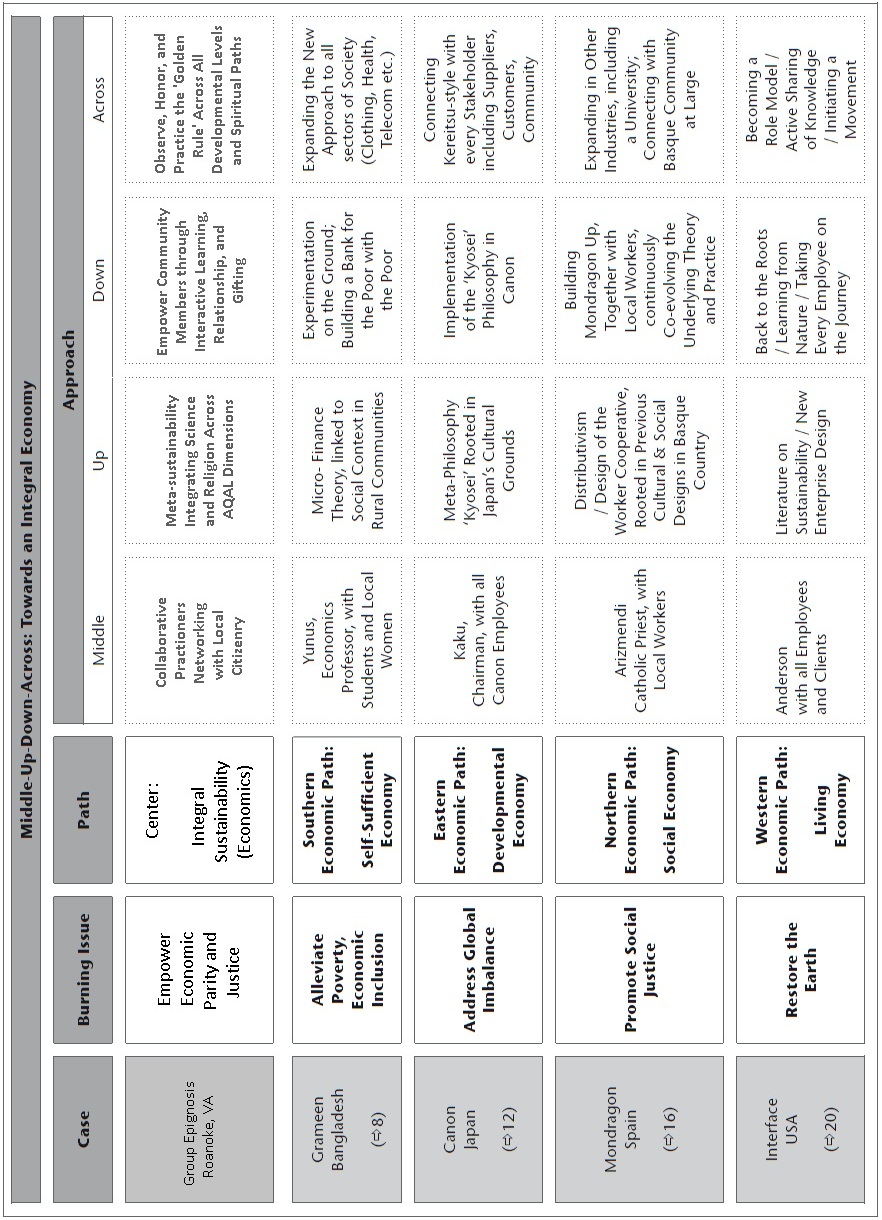
Integral Economic Ecosystems – Group Epignosis
(from Integral Economics – “Chapter 22: Co-creating the Future“
About the Author
Brian McConnell has worked with the underpinnings of Integral thought and theory, primarily in the fields of education and psychology, since first introduced to Ken Wilber’s, Eye to Eye in 1997. His background in meditative practice stems from an introduction to, and study of Theravada Buddhism with Ajaan Thanisarro Bhikkhu. Having worked with a diverse set of popular subcultures over this same period, learning and leadership are dimensions of particular interest to him in respect to Integral Economics. Brian presently serves as Director for Group Epignosis, a community of learner/collaborators in Roanoke, Virginia and is affiliated with the Integral Research Center as a Researcher/Practitioner in Integral Sustainable Development.
